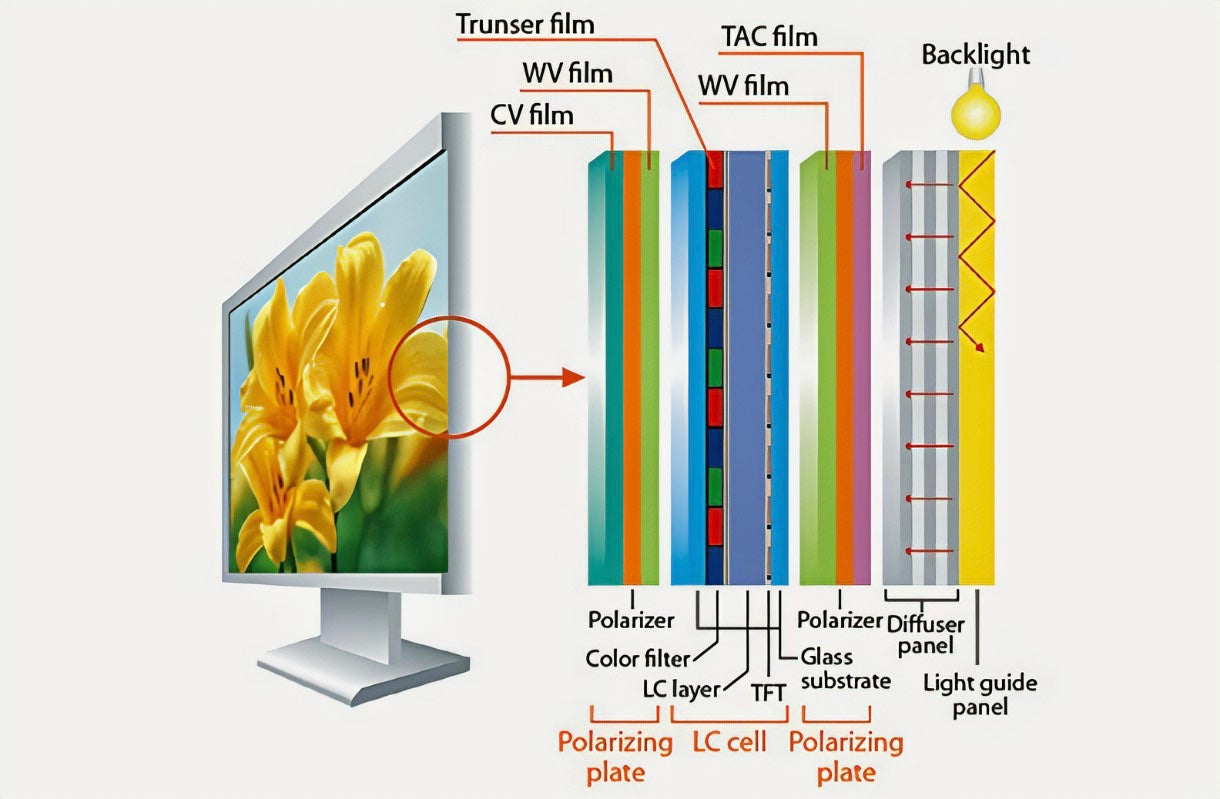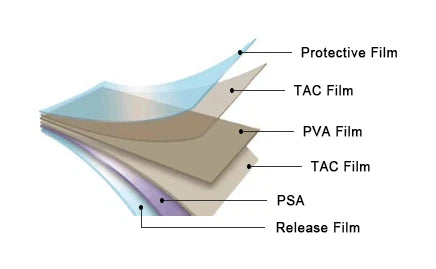
A polarizer (also known as a polarizing film) is an optical film material that transforms natural light into polarized light. Since LCDs (liquid crystal displays) rely on the controllable adjustment of polarized light by liquid crystal materials to achieve light transmission, polarizers are essential optical components in LCDs. In the structure of an LCD panel, polarizers are typically attached to the surfaces of the upper and lower glass substrates.
Basic Principle of Polarizers
There are various principles to achieve polarization. The polarizers used in LCDs usually work by using iodine molecules or dichroic dyes to absorb light of a particular polarization state and transmit light of another polarization state, thereby obtaining polarized light.
The iodine molecules or dyes adhere to the polyvinyl alcohol (PVA) layer during the dyeing process. When the PVA film is stretched in one direction, the iodine molecules align uniformly along the direction of the stretch.
After stretching, the aligned, elongated iodine molecules exhibit polarizing properties: they absorb light waves that vibrate parallel to the long axis of the iodine molecules and allow light waves that are perpendicular to pass through. The main absorbers of light in iodine molecules are the I₃⁻ and I₅⁻ ions. I₃⁻ ions primarily absorb blue light wavelengths, while I₅⁻ ions primarily absorb red light wavelengths. Increasing the iodine ion content can enhance the absorption capacity and improve the degree of polarization, but it also reduces the transmittance. Additionally, I₅⁻ molecules tend to vaporize or decompose into I₃⁻, so in practical applications, the content of both ions must be optimized to achieve the best balance of polarization and transmittance. Since iodine molecules are responsible for the polarizing effect in polarizers, they are also referred to as polarizing agents.
Read more

Ever wondered how the screen that you are using to read this content works in real life? Well, that’s what this article is about! IPS technology is a type of LCD technology that is used to display...

Polarizers are optical components made up of multiple composite layers. From top to bottom, these layers are the protective film, TAC layer, PVA layer, TAC layer, PSA layer, and release film. PV...



Leave a comment
This site is protected by hCaptcha and the hCaptcha Privacy Policy and Terms of Service apply.